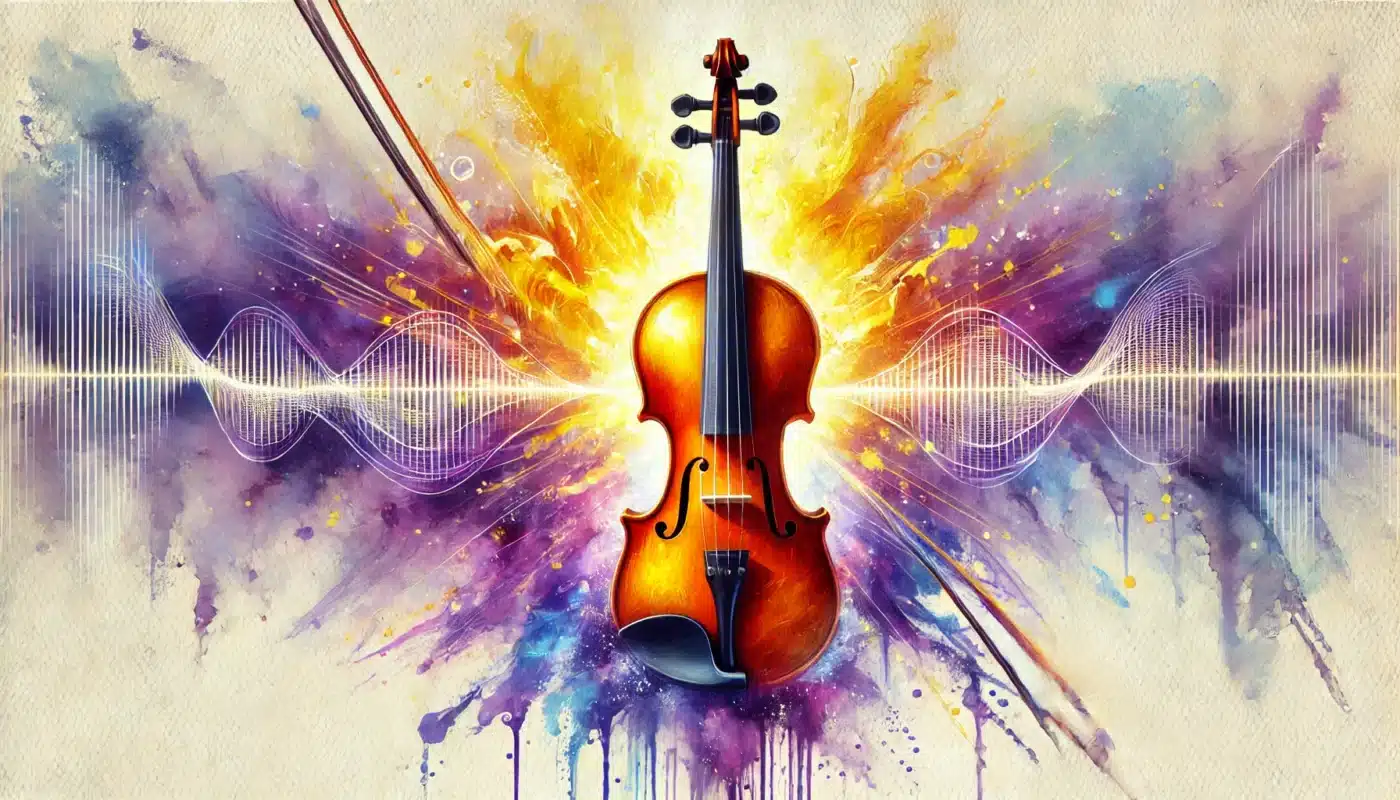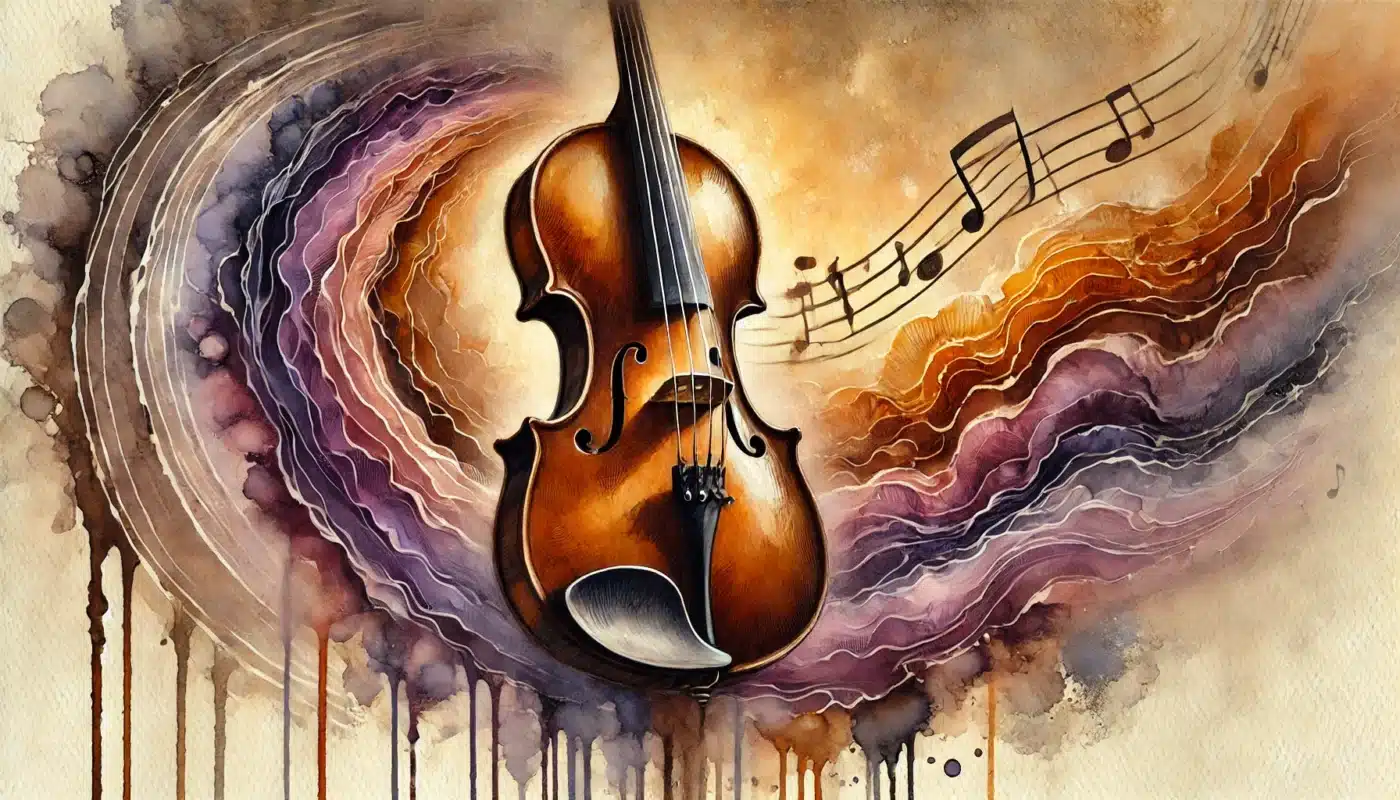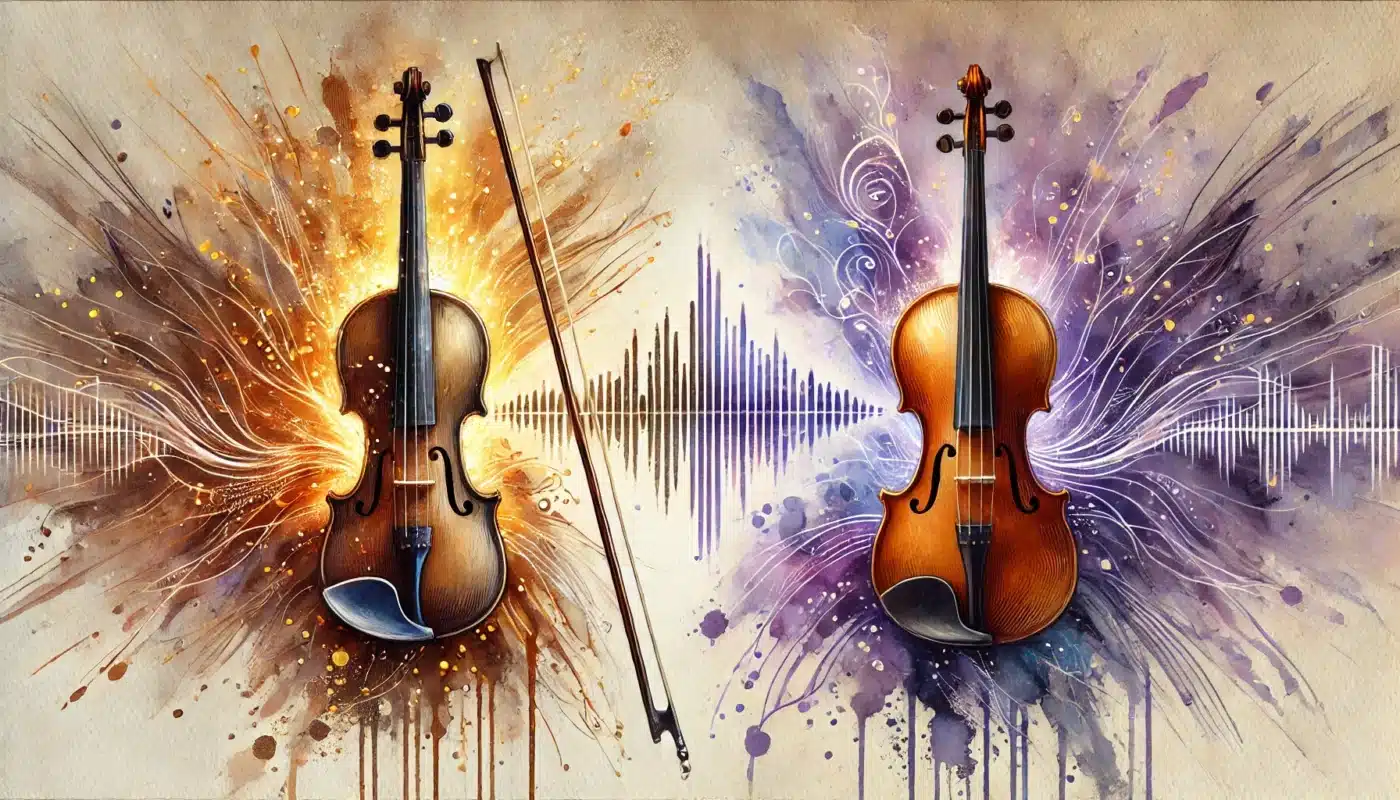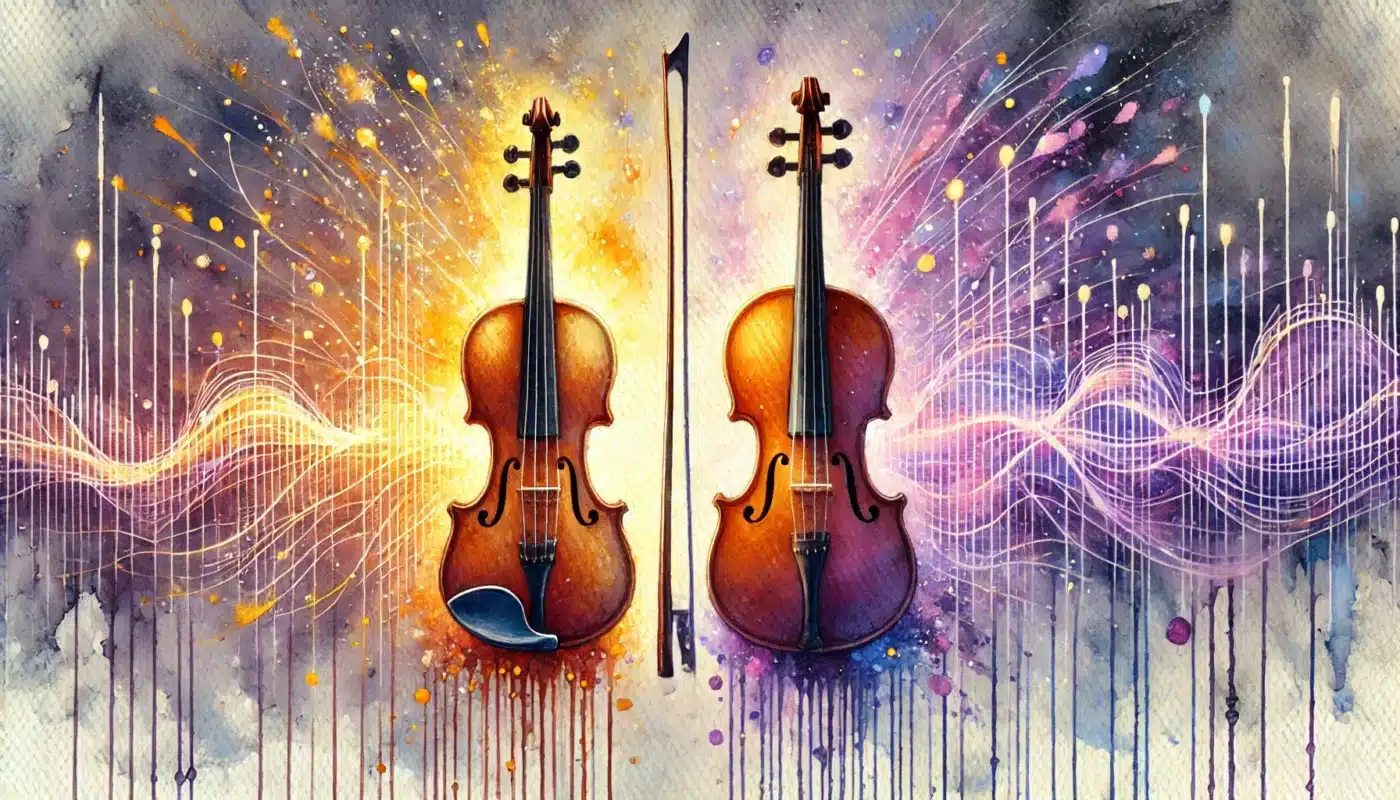Introduction
The violin and viola might appear similar at first glance, but their sound tells a completely different story. These instruments possess distinct tonal qualities that suit different musical roles.
Whether you’re drawn to the violin’s bright and brilliant sound or the viola’s deep and mellow resonance, understanding their tonal characteristics can help you appreciate their unique contributions to the music world.
If you’re considering which instrument might be right for you, understanding their tonal differences is crucial. For a deeper dive into choosing between the violin and viola, check out our detailed comparison: Viola vs Violin: Which Instrument Is Right for You?
The Bright and Brilliant Sound of the Violin

High Pitch and Versatility
The violin is known for its high-pitched, clear, and bright sound. It’s often the instrument that soars above the rest of the orchestra, carrying the melody with ease.
- Tuning: Tuned to the notes G, D, A, and E, the violin’s strings are pitched higher than the viola’s, which allows it to project a sharp, resonant sound.
- Tone Quality: The violin excels in producing vibrant tones that cut through the mix, making it ideal for fast, melodic passages. Its sound is often described as brilliant, sparkling, and penetrating.
- Role in Music: Whether in orchestras, chamber music, or solo performances, the violin frequently takes the lead role, often providing the most recognisable melodies.
Ideal for High-Energy Pieces
The violin’s agility and brightness make it perfect for high-energy, fast-paced compositions. From Vivaldi’s “The Four Seasons” to modern film scores, the violin’s voice is unmistakable and carries a wide emotional range—from joy and excitement to deep sorrow.
The Warm and Rich Sound of the Viola

Deep, Mellow Tones
The viola, in contrast, offers a warmer, richer sound. Its deeper pitch allows it to resonate in the middle range of the orchestra, giving it a more subdued but soulful voice.
- Tuning: The viola’s strings are tuned to C, G, D, and A, a fifth lower than the violin, giving it a more mellow and rounded sound.
- Tone Quality: Often described as warm, velvety, and full-bodied, the viola’s tone adds depth to the harmonic texture of an ensemble.
- Role in Music: The viola shines in the background, providing harmonic support, but also stands out in more introspective, emotional pieces where its richness can be fully appreciated.
Perfect for Harmonies and Middle Voices
The viola’s unique tone fits well in harmonic and supportive roles. It’s an essential part of the orchestral and chamber music landscape, often adding a layer of warmth between the high violins and low cellos. Its deep sound evokes a sense of intimacy and warmth, making it perfect for more lyrical and emotional moments in music.
Dynamic Range and Expression

Violin: Crisp Dynamics and Expressive Range
The violin’s dynamic range is one of its strongest suits. It can go from a whispering pianissimo to a bold fortissimo with ease.
- Expressive Techniques: The violin is well-suited to fast passages, trills, and tremolos. Its sound can be delicate and light, but it can also be powerful and aggressive when necessary.
- Wide Range of Emotions: Thanks to its high pitch and versatility, the violin can convey a wide range of emotions—everything from passionate excitement to tender melancholy.
Viola: Rich Dynamics and Depth of Sound
The viola’s dynamic range is equally impressive but expressed in a different manner. Its sound tends to be more grounded and rooted, giving music a sense of stability and depth.
- Expressive Techniques: The viola shines in slower, more lyrical pieces, where its ability to produce rich, sustained notes adds emotional weight to the music. The lower range gives the viola a depth that’s particularly effective in creating dramatic, soulful moments.
- Emotional Resonance: With its warmer tones, the viola often conveys feelings of introspection, melancholy, and tenderness. It’s an instrument of subtlety and nuance, offering a depth of expression that complements the violin’s brilliance.
Examples in Famous Works
Violin in Iconic Pieces
- “The Four Seasons” by Vivaldi: A perfect showcase of the violin’s ability to express vivid emotions and depict the changing seasons with dazzling clarity.
- “Carmen Fantasy” by Sarasate: A brilliant example of the violin’s agility and ability to convey drama and passion.
- “Schindler’s List Theme” by John Williams: A deeply moving piece that demonstrates the violin’s capacity to evoke sorrow and longing with a hauntingly beautiful tone.
Viola in Iconic Pieces
- “Harold in Italy” by Berlioz: A prime example of the viola’s role in adding depth and emotional complexity to an orchestral work.
- “Sinfonia Concertante” by Mozart: A stunning showcase of the viola as an equal partner to the violin, blending both brilliance and warmth.
- “Flos Campi” by Vaughan Williams: A mystical, atmospheric work where the viola plays a central role in creating a lush, introspective mood.
Conclusion
Though they may look similar, the violin and viola are worlds apart when it comes to their tonal qualities. The violin dazzles with its bright and energetic sound, while the viola enchants with its deep and warm tones. Whichever instrument you choose, you’ll be adding your own unique voice to the rich tradition of string music.

